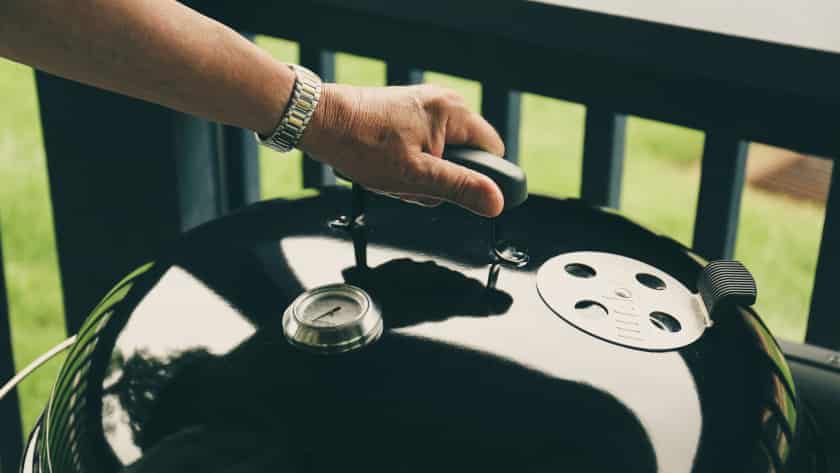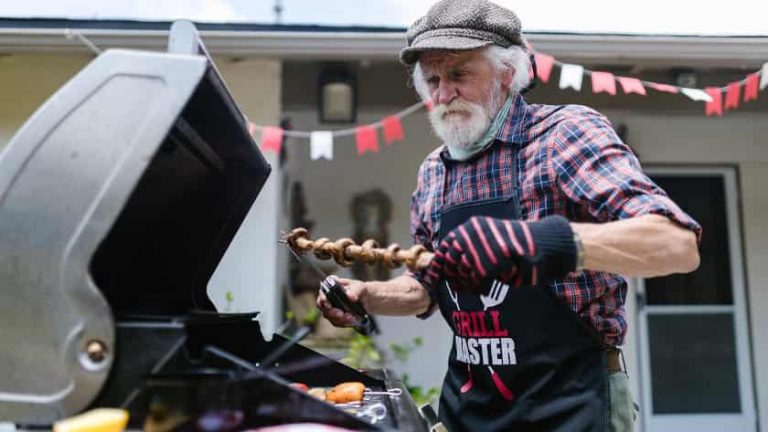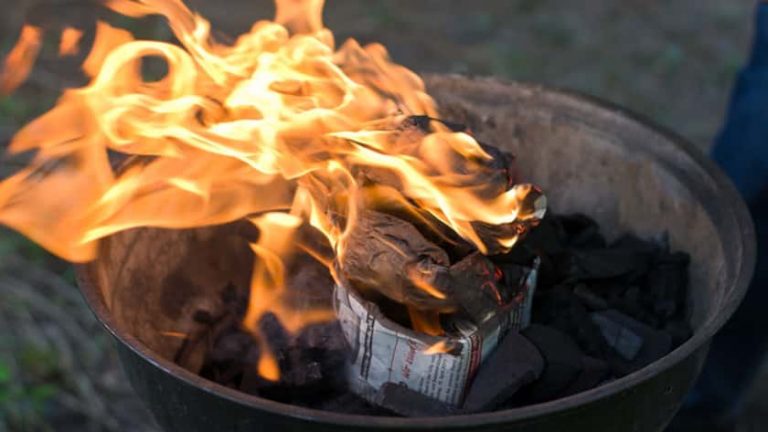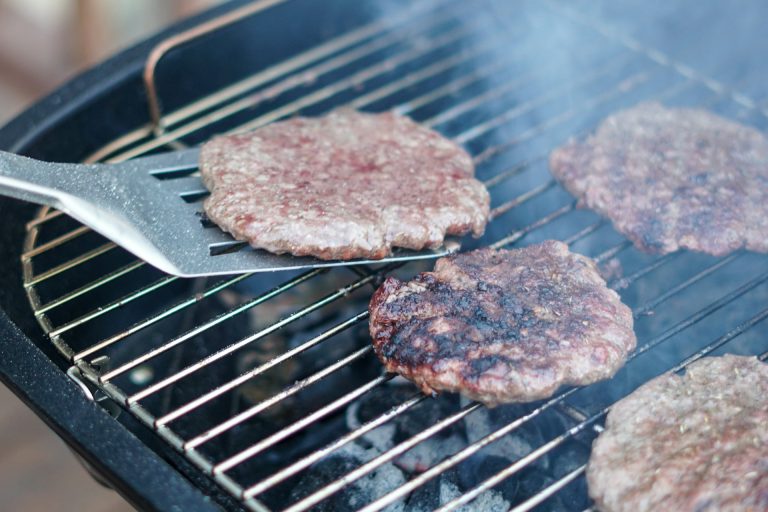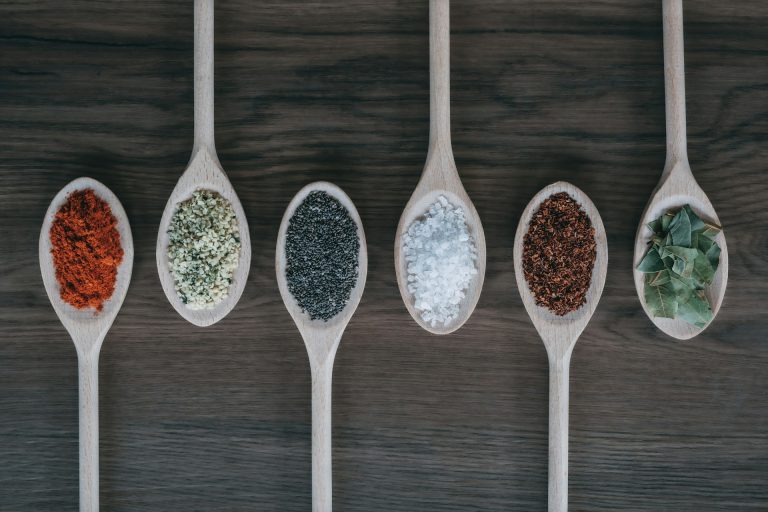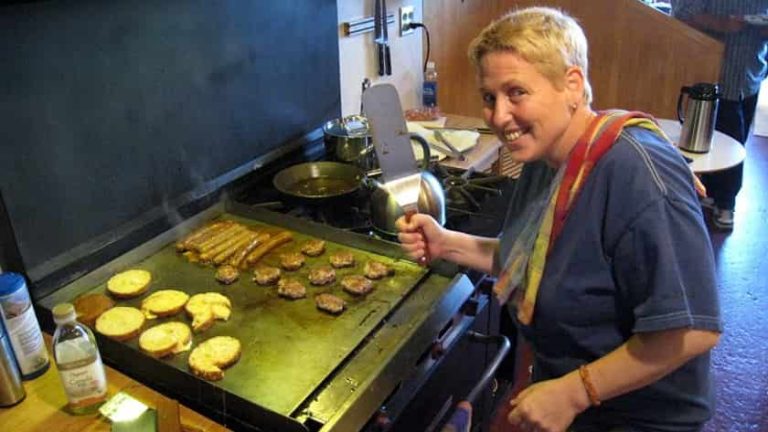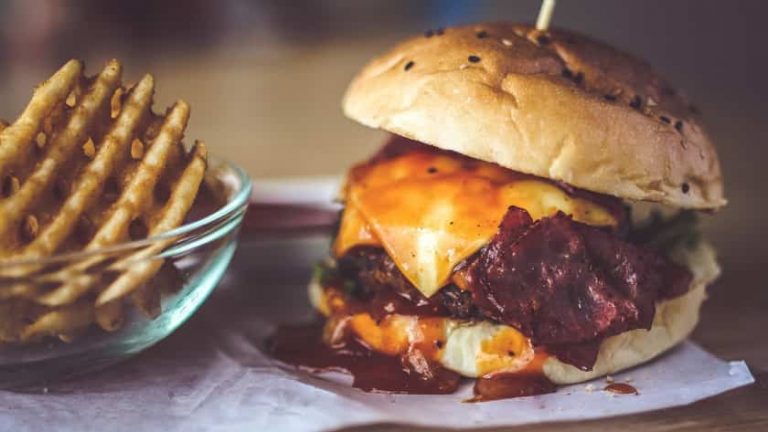Keep Your Charcoal Grill Hot & Maintain Heat
When it comes to grilling there is a sweet spot of temperature; where you get the best results to be it smoked meat or tender chicken grill. There’s something about grilling that is invigorating.
You want a constant grill surface temperature of about 450° ( for tender chicken ) and 250° ( for smoked meat ).
Cooking food over an open flame connects us to our ancestral heritage, particularly when we do it outdoors, and the scent of burning charcoal mingles with the savory aroma of roasting meat.
Of course, it’s just as likely that the meat is the thing burning if you don’t have much experience taming flames. Grilling can appear to be an almost arcane process to the aspiring outdoor chef, even with the technological advantages our modern-day grills grant us over our forebears.
Yet, the truth is all the troubles of grilling really boil down to controlling a single element: temperature. If you can maintain a consistent temperature in your grill, then cooking in it is as simple as using your oven.
And, while adjusting the heat with charcoal isn’t as convenient as turning a knob or pressing a button, it’s not hard once you know what to do.
With practice, trial and error, and several ruined bits of food, I believe you would ultimately figure out the process. But, why suffer through all of that when you can read this article and learn all you need to know?
How To Keep Charcoal Grill at Constant Temperature
Keeping your charcoal grill at constant temperatures can be tricky. You need to manage several different variables, and the best way to do this may differ depending upon your specific grill and just how hot you need it to be.
Yet, the main points are consistent for all charcoal grilling.
Adjust Your Fuel
A charcoal grill runs on charcoal and air, and both of these need to be managed to achieve a given temperature. You’ll start by getting the coals burning.
There are a few ways to do this, but to get the fastest start with the most even starting heat, use a chimney starter.
If you’re barbequing, or otherwise have a need for low and slow heat, start with fewer coals — just 5 is enough to hit that 225-250 F sweet spot. For higher temps, use more charcoal.
Once the coals are burning, fine tuning the temperature requires controlling the airflow. You can do this by adjusting the intake and exhaust dampers, vents located on the bottom and top of the grill, respectively.
You only need to use one or the other, and most grillmasters agree that the intake valve is the one to work with. Leave the exhaust wide open, then widen the intake opening for a hotter grill, or narrow it for a lower temp.
Measure Your Temperature
You’ll want an air probe for this. Yes, your grill may have a built-in thermometer, but these are infamously imprecise on charcoal grills. Using an air probe, you can get reliable readouts — and you can position it closer to where the food actually is in the grill.
Take your first measurement after allowing the coals to heat the grill for 15-20 minutes. Make adjustments as needed, and take new measurements every 5 minutes until you reach your desired temperature.
Use the 2-Zone Technique
Properly using your equipment should keep you from burning your burgers, but only creating zones of higher and lower heat grant the degree of control needed for delicate tasks, like roasting veggies, or smoking meats.
To do this, move the lit charcoal to one side of the grill. The area directly above the coals will be hottest, great for searing and charring. However, it’s also the area with the most variable temperature.
The other zone, away from the coals, uses ambient heat to cook. The hot air here is what your air probe reads, and what you are really aiming to control using these methods.
Ambient heat can remain stable for long stretches and surrounds food as opposed to blasting it from one side, allowing for more even, gentle cooking.
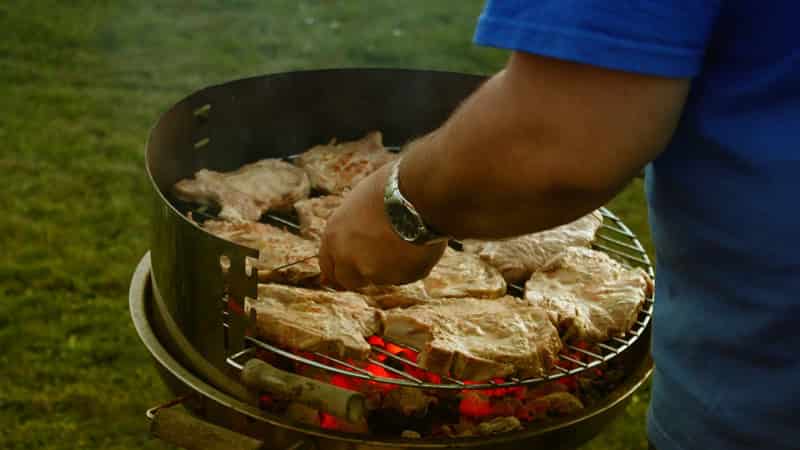
What To Do When Your Charcoal Grill is Too Hot
Even when you have gotten the hang of keeping a stable temperature in your charcoal grill, things can still become too hot for your liking.
Maybe you misjudged the heat needed for a new type of food and you’re in danger of burning it, or perhaps you need to move the grill itself and it’s too hot to handle.
In such situations, you have a few options to cool things down.
Place a Barrier Between Fire and Food
If something is in imminent danger of burning or being overcooked, you can buy yourself some time by insulating it from direct heat with aluminum foil.
Just fold a piece of foil at least 3 layers thick, and place it between the food and flame. This will block some of the heat while you adjust the temp down in other ways.
Cut the Air Supply
Remember the intake and outake dampers? In a pinch, you can close them both completely to starve the coals. Fire can’t sustain itself without a steady oxygen supply.
Shut the valves, for a few minutes and the fire dies, leaving only the ambient heat and the warmth of the coals.
Stir the Charcoal
Even with the fire out, a bed of charcoal will hold onto heat for a while — perhaps longer than you’re willing to wait. In that case, it can help to stir them up.
This exposes more surface area, helping to dissipate the heat more quickly. Carefully remove the grate, and gently stir the coals to do this safely.
Spray the Charcoal
Finally, you can dramatically accelerate cooling with water. While this probably doesn’t surprise you, it would be dangerous to douse the coals with a bucket of water.
Instead, use a spray bottle or a hose with a mist attachment to spray the charcoal.
It may take a little longer, but using too much water on very hot coals results in scalding clouds of steam that could cause serious injury.
Recomended Grill ( For Better Temp Control ): Weber Original Kettle Premium Charcoal Grill ( Amazon Link )
How Long Does it Take For Charcoal To Cool Down?
Your cookout has come to a close, and you’re ready to shut the grill down and wheel it back into the garage. But, you want to dispose of those used coals still smoldering in the ashes.
How long do you have to wait before they are safely cooled?
Well, assuming you do nothing more than close the grill lid and vents, you could be in for a long wait. Charcoal, particularly lump charcoal, can burn at 700 F.
It’s more likely that you’ll have it burning between 300-500 F, but the point is that it’s hotter than you might think. It can take 48 hours for coals left in the grill to fully cool from these blistering temperatures.
However, leaving them to cool is the safest, and most hands-off method. If you’re in a hurry, you can accelerate the process, but do so carefully.
As already mentioned, stirring the charcoal helps lower the temperature, as does spraying water.
However, you can take the application of H20 a bit farther once the coals have already cooled down from a glowing hot state. Not only the coals should be mostly cool before you apply more water, but the grill itself should be, at most, only warm. If the metal is still hot enough to make water sizzle, you could warp or crack the grill by dousing it.
Only once such dangers have passed should you feel free to spray, or even pour, a heavier stream of water into the coals. Mix it all thoroughly to completely douse the remaining heat.
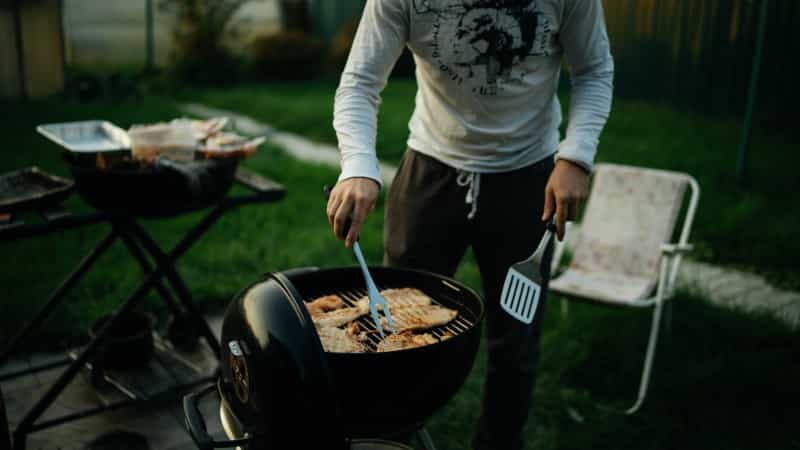
Can You Add More Charcoal While Cooking?
You can definitely add more charcoal to the grill while cooking. In fact, if you light it all, you will almost certainly need to if you intend to cook for more than 40-50 minutes straight, because charcoal burns out and begins to lose heat after around that much time.
So, the obvious benefit of adding more charcoal is that you can extend your cooking time.
However, it can also be used to help maintain that steady temperature you’re after. For instance, if you start with a few coals for a low temperature, gradually adding more can keep that heat consistent.
On the other hand, if you need to maintain a roaring blaze, you’ll want to keep it topped off at all times to keep the flame from flagging.
Regardless of how you plan to do it, you’ll need to keep your gloves and tongs handy to manipulate the hot grate and the charcoal itself.
Some grills have access points that allow you to get to the charcoal without disturbing the grate or food above, but even then you’ll need your gloves to safely operate so close to the flames.
In the case of a grill with an ash removal tray, you could potentially replenish the fire indefinitely. However, for grills lacking this feature, the buildup of ash will gradually make adding more fuel less beneficial, and ultimately impossible.
Moreover, adding unlit charcoal to the fire will produce plenty of unpleasant smoke that would normally not be a part of the actual cooking process.
Keeping an eye on the food could become an eye-watering prospect, and some of that smoke could impact the food’s flavor as well.
It’s that risk to the food, via smoke or difficulty re-establishing a steady temperature, that is the greatest drawback to adding charcoal while cooking.
It takes some practice to perform the maneuver without falling prey to those pitfalls.
How To Add Charcoal While Cooking
You can break this task down into two elements: the method and the mechanics.The method refers to how you are adding the charcoal to achieve a particular effect.
For instance, if you are starting to notice the grill temp dropping because the coals are all beginning to die, you need to use a method that will raise the temperature.
In such a case, you will want to get the coals started in a chimney starter, and add them to the grill already lit.
That is also the method you would use to avoid exposing your food to heavy smoke from freshly lit charcoal.
On the other hand, there is the minion method, designed specifically to maintain an even, low temperature. It begins with a ring of unlit briquettes, and a mound of lit ones in the center.
As the lit charcoal burns down, the outer ring comes up in temperature. You can add charcoal to this system by placing more unlit lumps around the perimeter, extending the process.
The mechanics of adding charcoal while cooking can change a bit depending on the form factor of your grill. If you have a traditional, top loading grill, you’ll need to remove the top and the grate to add fuel. If there is food on the grate, be sure to keep it well balanced when lifting.
Does your grill have a door allowing you to add your briquettes without lifting the grate? Make use of it to avoid having to handle cooking food or the red hot grate itself.
If adding lit coals, you can place them over the old pile, but if adding unlit it’s better to have them to the side to minimize smoking.
Tips On Building Long Lasting Charcoal Fire
The key to a long-lasting charcoal fire is in the careful arrangement of the charcoal itself. The individual bricks have an average burn time of one hour, and if lit all at once, that’s what you’ll get from the lot of them.
However, the minion method above can achieve burn times of 8-10 hours without the need to add more charcoal, and it all comes down to the setup. The basics are as follows:
- Don’t pile the charcoal too deep. As it burns, it turns to ash. If you have a deep pile, that ash will eventually cover the coals and smother the fire in spots. Limit the layer depth to two briquettes or lumps deep.
- Don’t light all the charcoal to start. It’s fine to do that if you don’t expect to grill for more than 50 minutes or so, but for a long burn you need something to take over from the dead coals.
- Arrange the coals for sequential burn. The minion method starts with the center coals and moves outwards. The snake method starts at one end of a coil of charcoal and gradually burns along the length. The point is to direct the heat from lit to unlit fuel in a predictable way.
- Provide tinder to help light new charcoal. Wood shavings or other bits of tinder placed on unlit bricks will ignite to ensure they activate as intended.
- Adjust for the environment. Very cold out? It’s going to take longer for the grill to heat up to a desired temperature, and opening the lid will suck all that heat away. A more hand’s off approach is best. Windy day? You’ll need to increase the amount of fuel you start with to attain the same long cooking time you’re used to.
Conclusion
Part of the fun associated with grilling is mastering the skills needed to do it properly. Most people will muddle through, and though they’ll produce a few burnt hotdogs or tough steaks, they’ll still have a good time.
Yet, the goal is always to improve. Having the know-how to control the fire in the belly of this backyard beast allows you to elevate the cuisine you choose to grill.
Sweet and tender grilled veggies, juicy burgers, plump hotdogs, and fall-off-the-bone BBQ will all be achievable. Practice the techniques outlined above, and you’ll be well on your way to earning that coveted title: Grillmaster.
Related Post To Consider
Best Gas Grills Under $500 Review & Comparison
Lump Charcoal vs Briquettes: Which One Better & Why?
